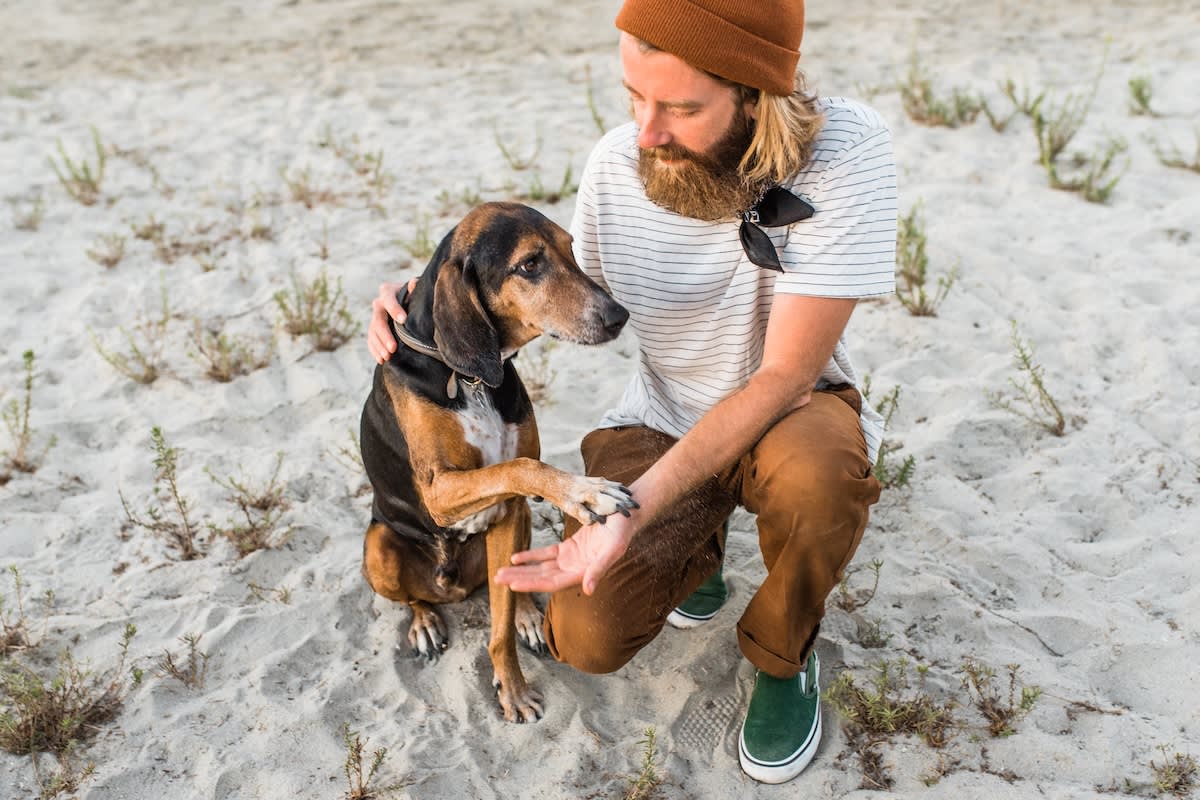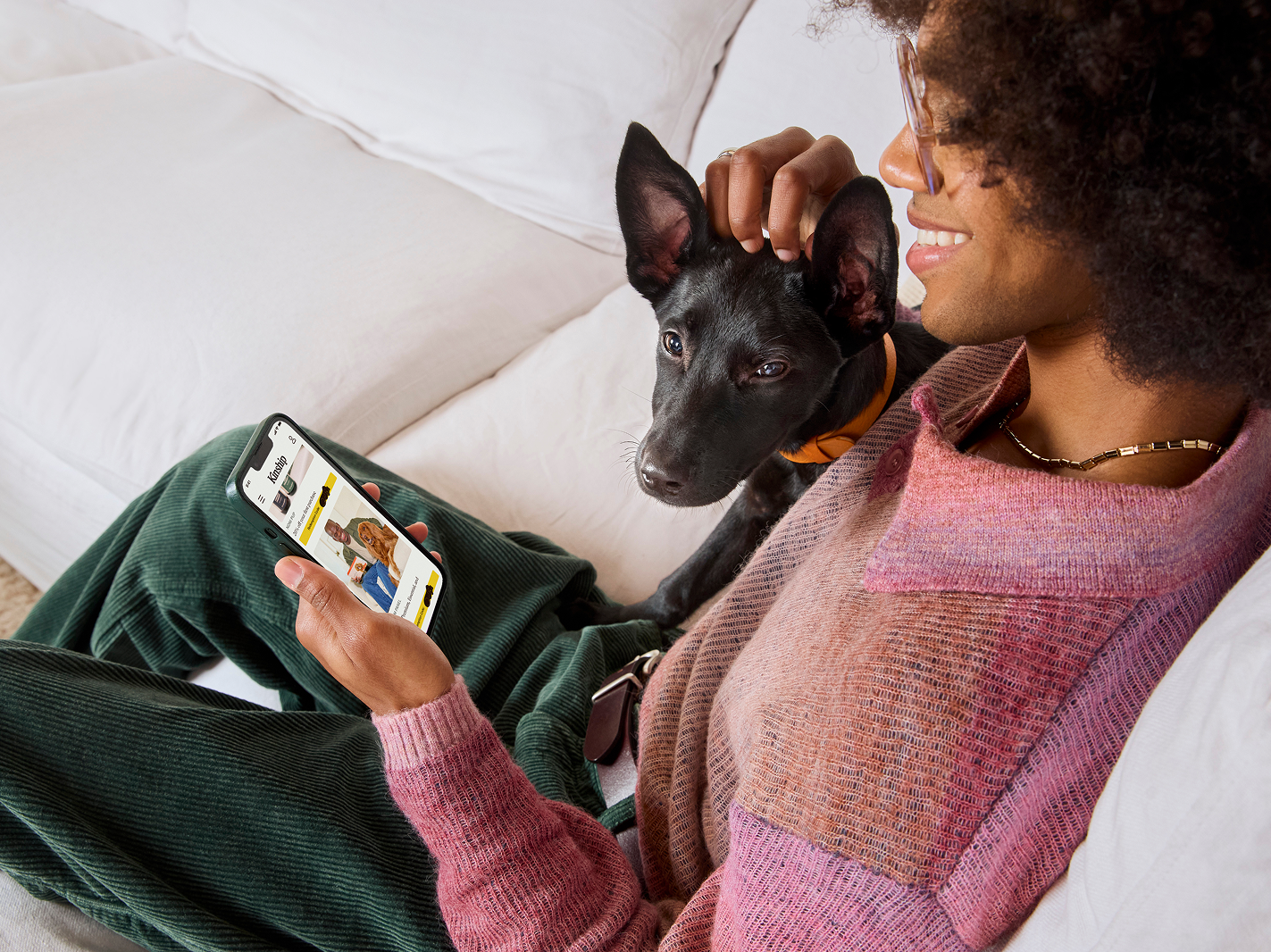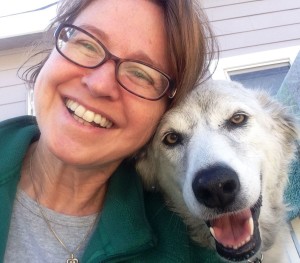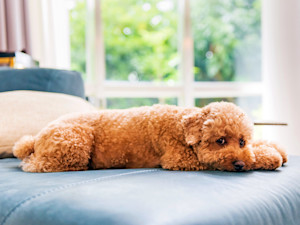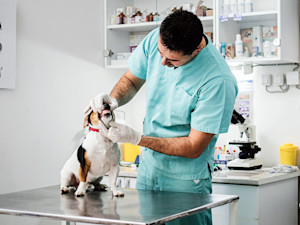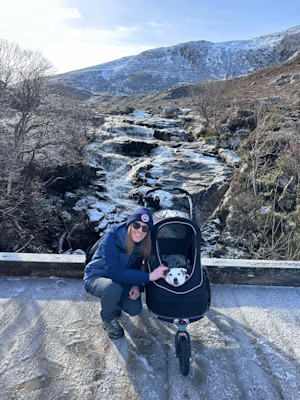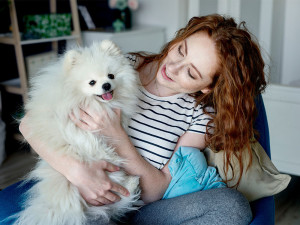Golden Oldies: Gentle Games for Senior Dogs
They’ve still got it!
Just because your dog is getting older, it doesn’t mean playtime is over. In fact, gentle, age-appropriate play can be one of the most powerful tools for keeping your senior dog physically active, mentally sharp and emotionally fulfilled. Silver fox status indeed.
Why older dogs still need play
Play helps maintain mobility, strength and coordination to support ageing joints and muscles in a safe and enjoyable way. It also encourages social interaction, curiosity, decision-making and problem-solving skills that can help slow cognitive decline.
Get (totally free) deals for food, treats, accessories, tech and way more pet parenting must-haves.
Emotionally, play acts as a natural stress reliever. It stimulates the release of endorphins to ease negative emotions like fear and anxiety, boosting mood and promoting a sense of calm as a result. Even short, low-impact play sessions can help counter negative emotional states, creating a more content dog overall.
Play also gives dogs an outlet for instinctive behaviours like chasing, chewing, foraging and exploring, which don’t disappear with age.
Why senior dogs may play less
As dogs get older, a variety of physical and cognitive changes can make playing more challenging or less appealing. Watch for these signs that it is becoming more difficult:
Moving at a slower pace during games
Reluctance to chase toys or balls
Shorter play sessions before resting
Less engagement or enthusiasm
Difficulty getting up after lying down
Stiffness after play sessions
One of the most common reasons for a reduced desire to play is joint pain or arthritis. According to Canine Arthritis Managementopens in new tab, osteoarthritis is the leading cause of chronic pain in dogs, affecting an estimated 80% of dogs over eight years old. If your dog is experiencing joint discomfort, running and jumping may now feel painful instead of fun. Muscle loss and reduced stamina, also common in older dogs, can also make previously enjoyable activities tiring or uncomfortable.
Cognitive changes, such as Canine Cognitive Dysfunction (similar to dementia in humans), may cause confusion or decreased responsiveness. Some dogs may forget how to engage with familiar toys, seem disoriented or become confused during games.
Sensory decline can also play a role. As their hearing or vision fades with age, dogs may become more hesitant to explore or interact with their environment. They may struggle to see a toy being tossed, or not feel confident enough to move around freely, while hearing loss can prevent them from responding to your voice or cues.
Finally, chronic illness or the side effects experienced from medication can sap energy and make even low-impact activities feel like too much of an effort. If you have noticed any of these shifts in your dog, it doesn’t mean play is no longer possible. It just calls for a more thoughtful, customised approach.
Low-impact play ideas for senior dogs
As dogs age, play should be adapted to meet their changing physical needs. The goal is to offer gentle, enriching activities that engage the body and mind without putting stress on joints or causing fatigue. Low-impact play helps maintain mobility, keeps the brain active and creates a positive emotional state without requiring fast-paced or strenuous movement.
Interactive tug or soft fetch games
Classic games like tug and fetch can still be part of your senior dog’s routine, but you might need to adopt a softer approach. Use lightweight, plush toys that are easy to grip and gentle on aging jaws, and keep tosses short and low, avoiding any need to jump or run. If your dog enjoys tug, a slow, gentle back-and-forth with a soft toy can be very engaging, as long as their joints (and teeth) are healthy enough.
Always leave toys within easy reach, even if your dog doesn’t immediately engage. Watching, sniffing, or tracking a toy with their eyes still activates the brain and stimulates important neural pathways. To keep things fresh, try rotating toys every few days to renew your dog’s interest.
Enrichment walks
Walks aren’t just about physical exercise; they’re an important form of sensory enrichment. As dogs get older, quality matters increasingly more than quantity. Let your dog set the pace and take plenty of time for sniffing. These relaxed, scent-focused strolls, commonly known as ‘sniffaris’, still offer tremendous mental stimulation.
Choose soft walking surfaces like grass, dirt or woodland trails instead of hard pavement, which can be tough on ageing joints and paw pads. Varying your route adds valuable novelty, and I often (where safe to do so) allow my dogs to choose the direction of our walks, too. Allowing them to make their own decisions boosts their confidence and helps them feel more in control of their environment and what happens to them. This is empowering, especially for a senior dog who may be losing their confidence.
If your dog tires easily or has stiff joints, try incorporating ‘sit and watch’ or ‘stand and watch’ (if sitting is difficult) breaks. Let them rest in a comfortable spot and observe the world – passing people, dogs, the rustle of leaves and so on. This calm, low-effort enrichment is just as valuable as movement. And if your dog isn’t up for walking at all, simply standing in your yard and allowing them to watch and sniff can still provide meaningful engagement.
Hydrotherapy (if available)
Swimming or walking in water* can be a helpful way to keep senior dogs active without placing stress on their joints. The buoyancy of the water supports the body, allowing it to move more freely while strengthening muscles and improving circulation. For dogs with mobility issues, even standing in shallow water can provide therapeutic resistance.
If formal hydrotherapy isn't available, shallow paddling in a safe stream or at a dog-friendly beach can provide similar benefits. Note that not all dogs enjoy being in water, so always make sure your dog feels comfortable and safe before introducing any water-based activities.
Brain activities for senior dogs
Mental stimulation is just as important as physical exercise for dogs. Engaging your dog’s ‘thinking’ brain helps reduce stress and anxiety, prevent boredom and support long-term cognitive health. It can also improve mood and focus, offering comfort and structure in a world that may feel more confusing due to age-related changes.
Food-based enrichment
Food toys and puzzles are an easy way to activate a dog’s brain while tapping into natural foraging instincts. When dogs sniff, search, and solve a puzzle to get a reward, it stimulates the brain’s ‘seeking’ system, a powerful motivator that encourages exploration and releases feel-good chemicals like dopamine. Options include:
Slow feeder bowls are designed to slow down mealtime and encourage thoughtful eating. For senior dogs, opt for versions with wide, shallow compartments that are easy to access without excessive pawing or neck strain.
Lick mats offer an inherently calming activity. Spread dog-safe (xylitol-free) peanut butter, cream cheese, yoghurt, mashed pumpkin, or whatever else your dog loves across the textured surface. The slow, repetitive licking action helps release endorphins and can soothe anxiety.
DIY puzzles – like a muffin tin filled with treats and covered with tennis balls – add an easy problem-solving element to your dog’s day. These can be adjusted for difficulty depending on your dog’s ability and interest.
Snuffle mats mimic foraging in natural environments. Hide dry treats or kibble in the fabric folds to encourage gentle sniffing, pawing and searching.
Chew and treat toys
Chewing is another naturally soothing and satisfying activity for dogs, especially when the toys are appropriate for their ageing mouths.
Choose soft-but-durable chew toys made for seniors. These satisfy the chewing urge while being gentle on worn or sensitive teeth. Look for rubber toys with some give instead of hard plastic or rawhide.
Stuffable toys like KONGs are a handy way to combine chewing with food-based play. Fill them with soft, easy-to-access foods like mashed pumpkin, banana or small pieces of your dog’s favourite treats. Consider partially freezing the fillings for a longer-lasting challenge, but make sure it’s still accessible. If the toy is too difficult, your dog may lose interest.
Scent work and sniffing games
For senior dogs, engaging the nose is one of the most effective ways to provide meaningful enrichment without placing stress on the body. Research shows that when given the choice, dogs naturally prioritise sniffing as a way to explore and feel safe in their environment. It also has a measurable calming effect, reducing pulse rate and blood pressure.
You can start simple with indoor scent games, like hiding high-value treats around the house or tucking a favourite toy behind the furniture and encouraging your dog to “find it”. Outdoors, scatter treats across the lawn or in flower beds and let your dog forage naturally.
Again, be sure to adjust the difficulty level to your dog’s cognitive and physical ability. Some seniors may benefit from easier setups with visible, elevated treats or a strong scent trail, while others enjoy more of a challenge. The whole idea is to keep it accessible and enjoyable rather than cause frustration or loss of interest.
Training games
Training is another good way to provide a mental workout. Here are some options:
Work on basic cues like “look at me,” “touch” (nose to hand) or “find it,” which are low impact but mentally stimulating.
Teach new tricks that don’t require physical strain, such as targeting a hand or waiting in place.
You can even add variety to familiar cues, like asking for “stay” in different locations or introducing a new hand signal (especially useful for dogs becoming hard of hearing) to reinforce a known behaviour.
Be mindful that some senior dogs may struggle with positions like “sit” or “down” due to joint pain. Adjust the challenge level so your dog feels successful and encouraged.
How to encourage a senior dog to play
Start by choosing the time of day when your dog is most alert, such as after a nap or mealtime. Use gentle tones, slow movements, and your dog’s favourite toys or familiar scents to spark interest. Getting down on the floor at their level can help invite interaction without pressure.
Keep play sessions very short (just 3–5 minutes at first) and focus on frequent, low-pressure opportunities rather than long, tiring games. Always watch for cues of fatigue or overstimulation and be ready to pause if your dog seems unsure or overwhelmed.
To keep things fresh, rotate toys and occasionally change your routine. Even small variations can reawaken your dog’s curiosity. Most importantly, reward any sign of interest, whether it's a subtle tail wag, a sniff or a glance towards the toy, with immediate praise, stroking (if your dog values that) or a tasty treat. This helps build confidence and reinforces the idea that play is fun and safe.
When to consult your vet
While a gradual decline in activity is a normal part of aging, a sudden change in behaviour can be a red flag and may signal discomfort, pain, or an underlying health issue. Be on the lookout for signs such as stiffness, limping, or reluctance to move, as these may indicate joint problems or arthritis. Other concerning symptoms include a drop (or increase) in appetite or thirst, confusion or disorientation, increased sensitivity to touch or changes in toileting habits.
You might also notice your dog becoming withdrawn, restless, unusually vocal or sleeping far more than usual. Some dogs may begin hiding, show loss of balance or coordination, or simply stop engaging with their environment altogether.
These changes can be subtle or come on gradually, but they’re important to catch early. Senior dogs should ideally have veterinary checkups every six months, even if they appear well.
*Before starting any water therapy, check with your vet, especially if your dog has heart issues or respiratory conditions.
References
Kogan, Lori R. “Dog Owners and Preventative Healthcare: Knowledge Level, Interest, and Impact on Perceptions of Veterinarians’ Trustworthiness and Empathy.opens in new tab” Journal of the American Veterinary Medical Association, no. 1, American Veterinary Medical Association, Nov. 2024, pp. 1–9.
“Pulse Study ‘at the Heart of the Walkopens in new tab’ | DogFieldStudy.” Www.dogfieldstudy.com.
“Arthritis in Dogs - the Basics | Canine Arthritis Managementopens in new tab.” Canine Arthritis Management.
